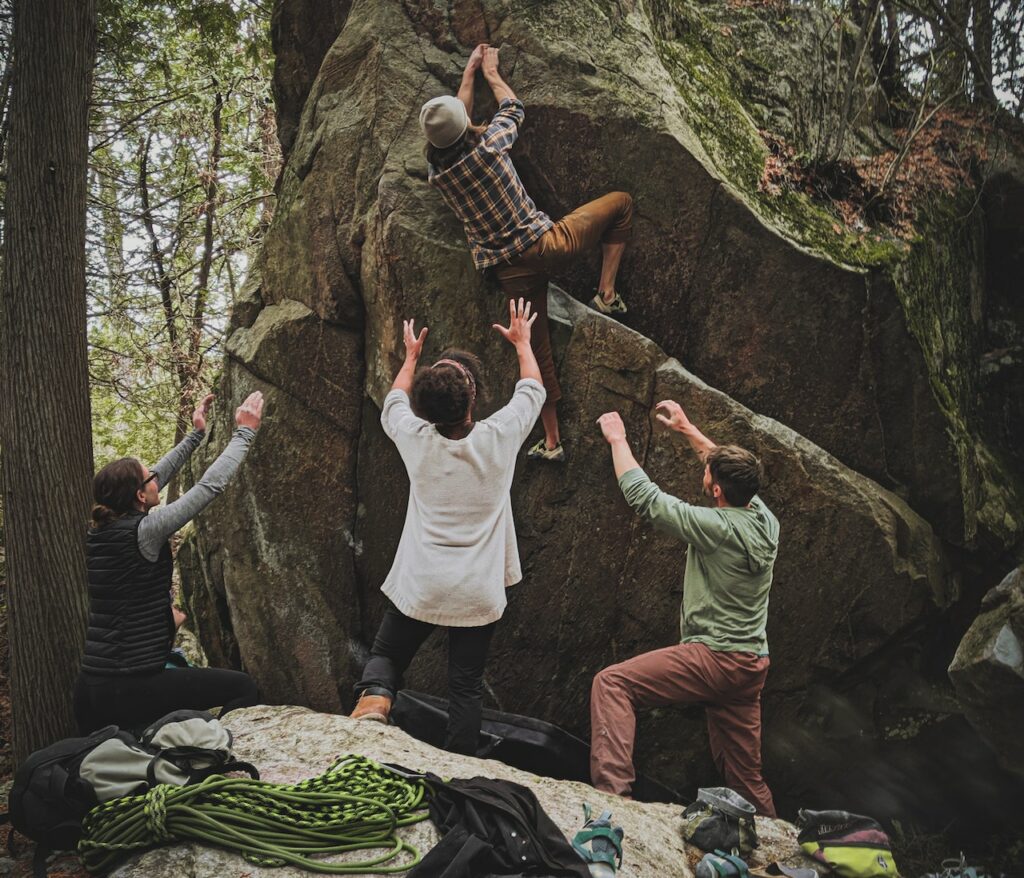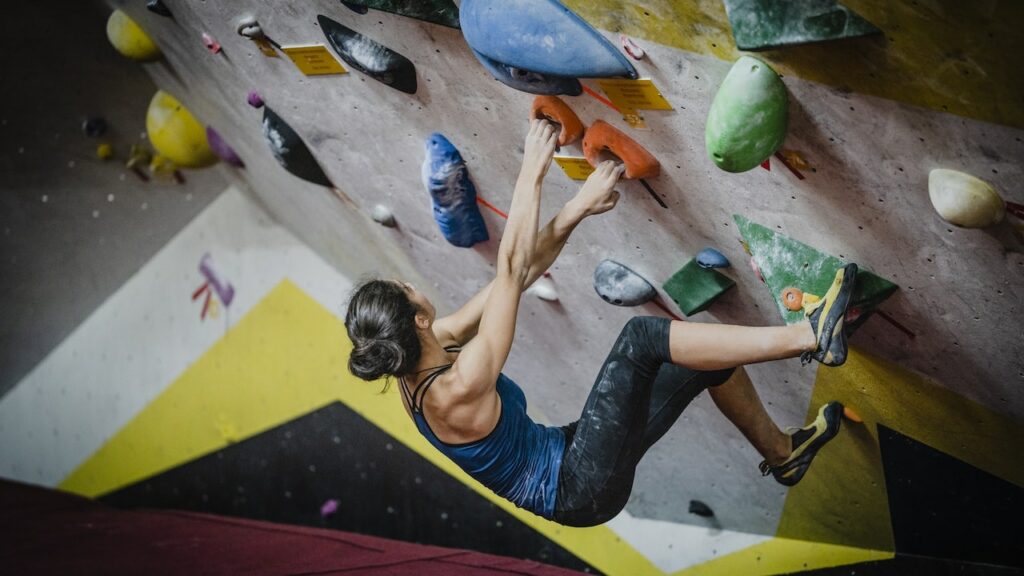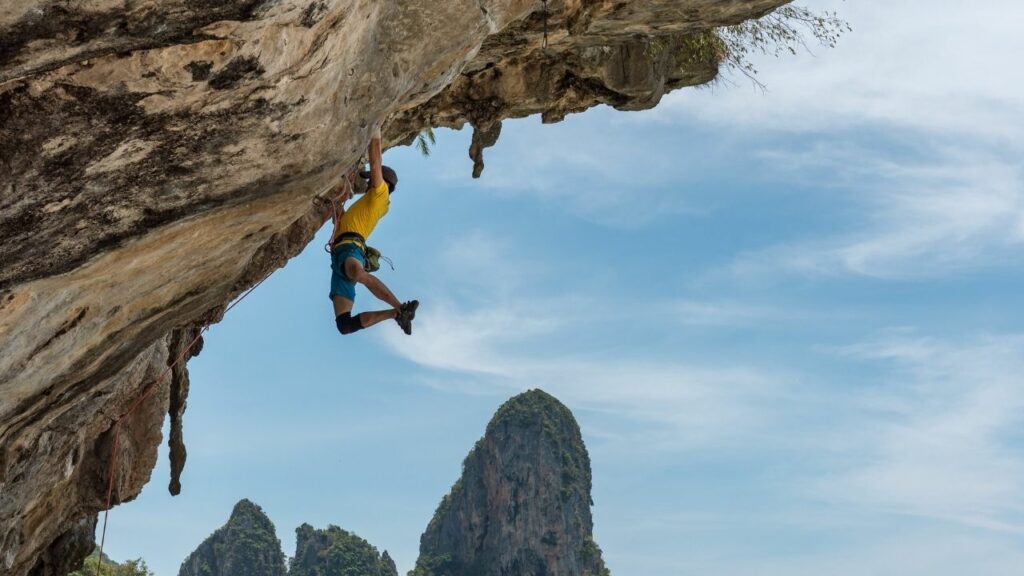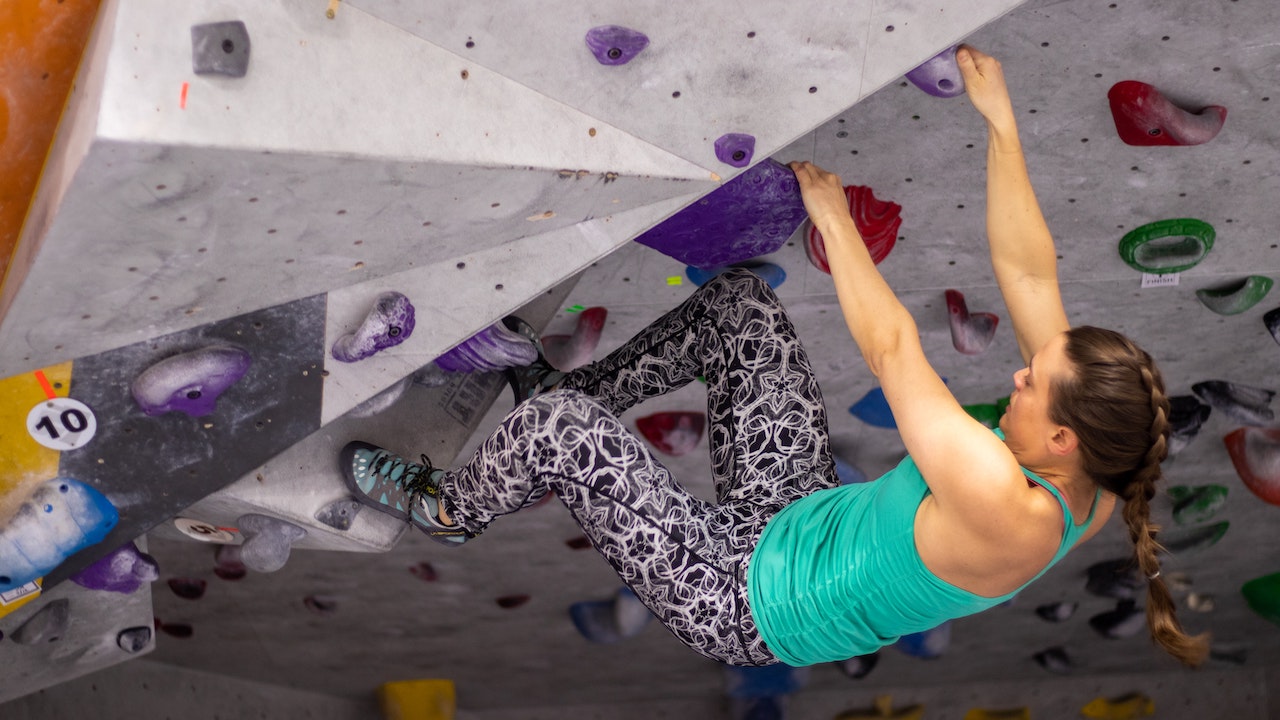The number of opinions about bouldering’s difficulty is probably as many as the number of climbers out there. Some find bouldering easier for a beginner, while others think it’s incredibly challenging.
Let’s look at the differences between bouldering, top roping and rock climbing, and whether outdoor bouldering is harder or not.
Bouldering vs. Top Roping
Bouldering is much harder than top roping because it requires more strenuous and dynamic moves to send a route. The starting bouldering grades are also more challenging than starting top-roping routes because there’s no safety equipment.
1. Safety and Injuries
With proper technique, solid equipment, and a good belay, few accidents happen when top rope climbing. In fact, you really can’t get hurt unless your anchors are old or damaged. Your top-rope is always attached to a belay device that’ll cushion your fall if you slip.
But if you slip while bouldering, you’ll fall straight down to the landing pads. Landing pads might sound safe, but it’s nothing compared to a belaying system.
If you don’t maintain your posture while falling from a boulder, you could potentially twist or break your ankle or wrist. There are really no do-overs in bouldering. I don’t even remember how many times I hurt my wrist when I started intermediate-level bouldering.
In comparison, I learned top-roping pretty fast. Sure, I had my rock climbing experience to back it up, but I was bouldering easier routes for just as long.
2. Bouldering Routes
Bouldering and top roping routes are not graded on the same scale. Bouldering routes use V-Scale, while top roping use the YDS scale.
Starting bouldering routes are VB or “VB” beginner, which are the same as top-roping routes that are graded between 5.1 and 5.3. And, the easiest top-roping routes start from 3 on the YDS scale.

3. Breaks and skills
There are no breaks or do-overs when bouldering because if you fall, you’re back at the bottom – on the starting point. But you can get a few breaks while top-roping, thanks to the belay device and rope.
Because there are no breaks, boulderers need to be more dynamic and precise – any wasted effort or move could potentially make you skip up and fall down.
You’ll also need more muscles and physical strength to perform such explosive moves and not fall down out of fatigue.
How hard is bouldering?
Bouldering won the match against top-roping, but how hard is it really? To be fair, both are different sports with different skill requirements, equipment, and routes.
Let’s look at how tricky bouldering can be as a standalone activity.
1. Skills and strength matter more in bouldering
Raw physical strength and skills are an integral part of climbing of any kind, but they matter more when bouldering outdoors. Don’t be fooled by the skills you learned initially because the basic techniques, especially for indoor bouldering, are quite straightforward.
But the difficulty increases exponentially as you climb higher. You’ll realize that you need to master your skills if you wanna send advanced routes.
Bouldering also requires a lot of physical strength to reach the end of the route because it’s more tiresome than other climbing alternatives. There’s also no safety equipment on the wall when bouldering, which increases the difficulty and stress.
For example, if you’re 175 lbs, you’ll be pulling 175 lbs up the wall without breaks. But in top roping and rock climbing, you can simply pause and hang on the rope.
You should build up as many useful muscles as possible and learn the fundamentals like smearing, drop-knee, and flagging.
2. It’s spontaneous
Climbing a smaller rock is more spontaneous than climbing a wall.
You have to find the best route and make decisions based on your skills and physicality because you can’t afford to take extended breaks, or you’ll get even more fatigued.
You could argue that all climbing activities require spontaneous decision-making, but we both know that others have hanging resting positions while bouldering doesn’t.

3. Precision sends the route
As I said, you need raw strength to do good in bouldering. Grabbing the holds one after the other takes a lot of precision and strength.
Even though most bouldering routes are short (up to 13 – 18 feet), you need to make some intense moves to send the routes precisely. Some even compare it to intense HIIT workouts.
Outdoor bouldering is harder and more challenging than top roping and rock climbing. The difficulty stems from its lack of safety equipment which could be fatal if you’re not experienced because there are no do-overs in outdoor bouldering.
Of course, not everyone would agree with me. Like this Reddit user @Just_Treading_Water on the ClimbHarder subreddit who wrote a two-page argument against bouldering’s difficulty. He argues that it’s not bouldering itself that’s complex but rather it’s the route grading system. And he has a point.
The grades for climbing route difficulty are complex, making it harder to accurately compare two climbing activities.
But I wouldn’t go as far as to say bouldering is easier, especially outdoor bouldering.
Bouldering vs. Rock Climbing
The major difference between bouldering and rock climbing is the height of the rock.
Boulders used in bouldering are generally 13 – 16 feet high while the walls in rock climbing can be 100-feet high on average. They can even get as tall as the giant 541-feet high CopenHill rock climbing wall in Switzerland.
Now let’s compare rock climbing and bouldering in terms of difficulty.
Bouldering and rock climbing are very different from each other in terms of equipment, safety, and even techniques. But bouldering is harder than rock climbing. It’s much more dynamic and challenging because of its lack of equipment and resting position.
Lead climbing and top roping are two branches of rock climbing, and you know how bouldering vs. top roping turned out. Here’s what you need to know about the differences:
Climbers: Bouldering is suitable for climbers with high flexibility and muscular strength.
Nature of Climbing: The fundamental climbing techniques are different between bouldering and rock climbing. Sending high routes requires endurance and mental strength to remember the routes and analyze everything while hanging from a rope. Bouldering, on the other hand, is much more dynamic.

Use of muscles and training:
We use slow-twitch muscles when rock climbing the high walls and fast-twitch muscles during those intense bouldering moves.
The training, however, is quite similar for both of them – you need to build up endurance, grip strength, and a ton of muscles in your arms and legs. One simple difference is that bouldering is an excellent training exercise for both rock climbing and bouldering.
Why is bouldering the best climbing activity for beginners?
Technically beginners prefer indoor bouldering, not outdoor bouldering. Indoor bouldering at your local gym is the easiest, most practical way to learn the basics of climbing. It doesn’t require complex equipment or falling on the ground. Outdoor bouldering is a whole different ball game in terms of the danger level.
But that’s not necessarily a bad thing. It may be harder and more dangerous than rock climbing and top roping, but bouldering is honestly a blast.
You just can’t replace the feeling of sending a route on your own without a rope, a belayer, or any support. It’s 100% your own achievement, and that’s an awesome feeling.
There are also many benefits to trying bouldering first or doing it to practice your climbing skills at a local gym.
1. Bouldering builds strength and technique
It’s just like working out. If you wanna build your biceps, then you do bicep exercises, right? Well, the best way to learn climbing techniques and build climbing-intensive muscles is to boulder.
2. It costs less
Bouldering is much cheaper than any other climbing activity. You don’t need any equipment other than climbing shoes and chalk. Outdoor bouldering is virtually free, and local gyms don’t charge much either.
3. No partner required
You can go bouldering alone without hesitation. It’s not as dangerous as you might think. Bouldering at a local gym doesn’t even require a spotter. Just take a couple extra landing pads if you go bouldering outside.
All things considered, bouldering is the perfect all-rounder of rock climbing activities. Go find a boulder or local gym to see for yourself.

